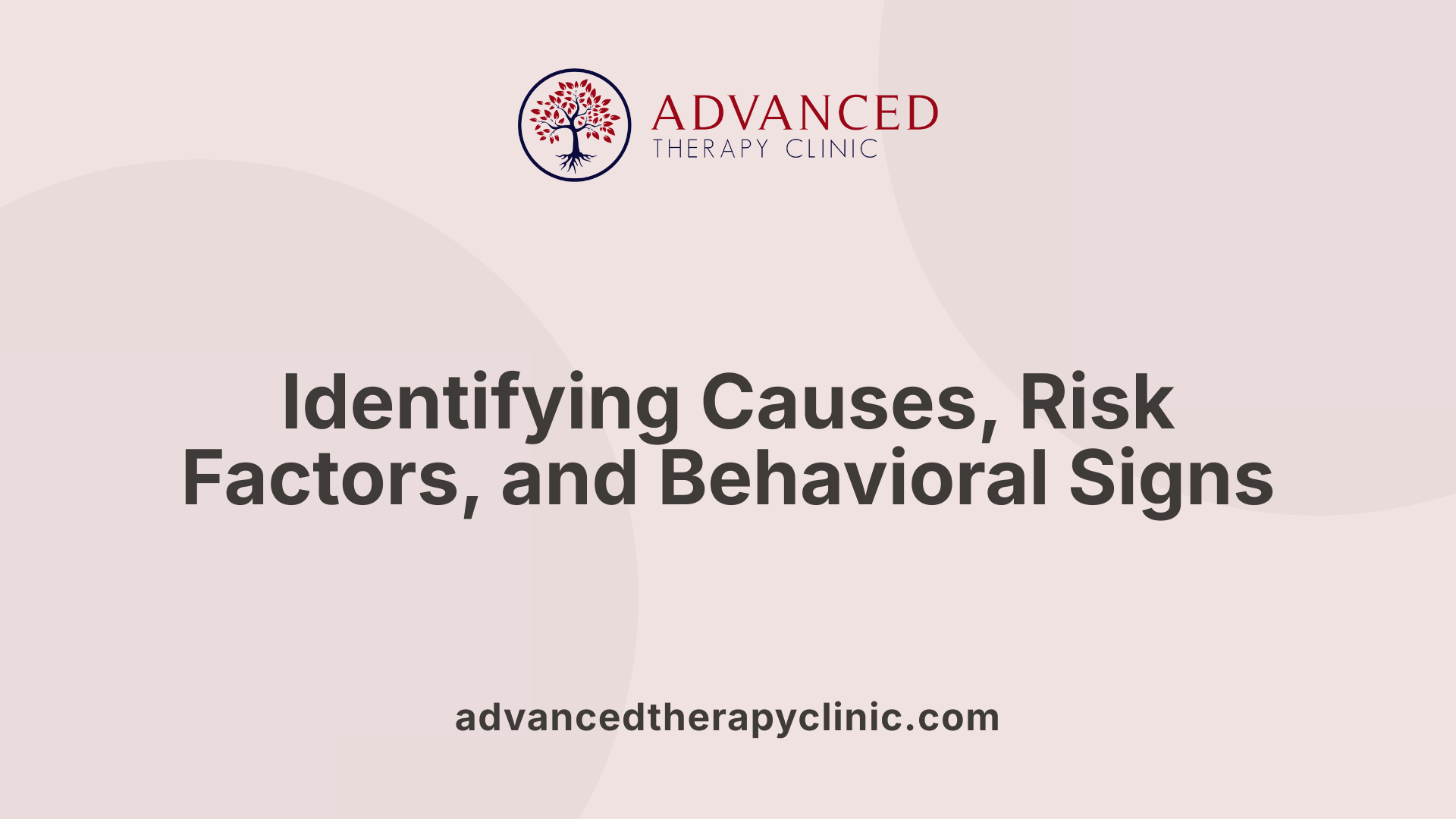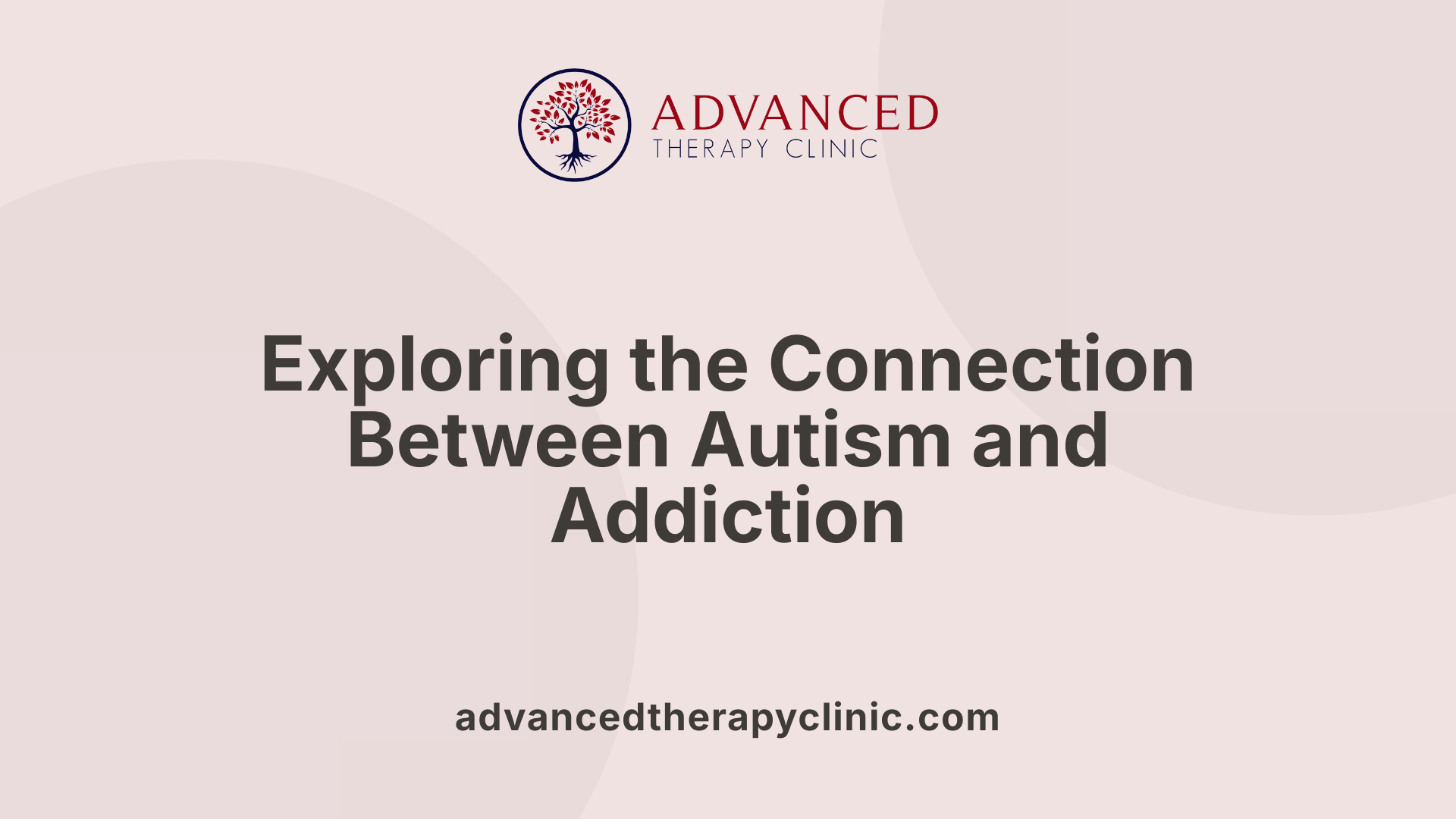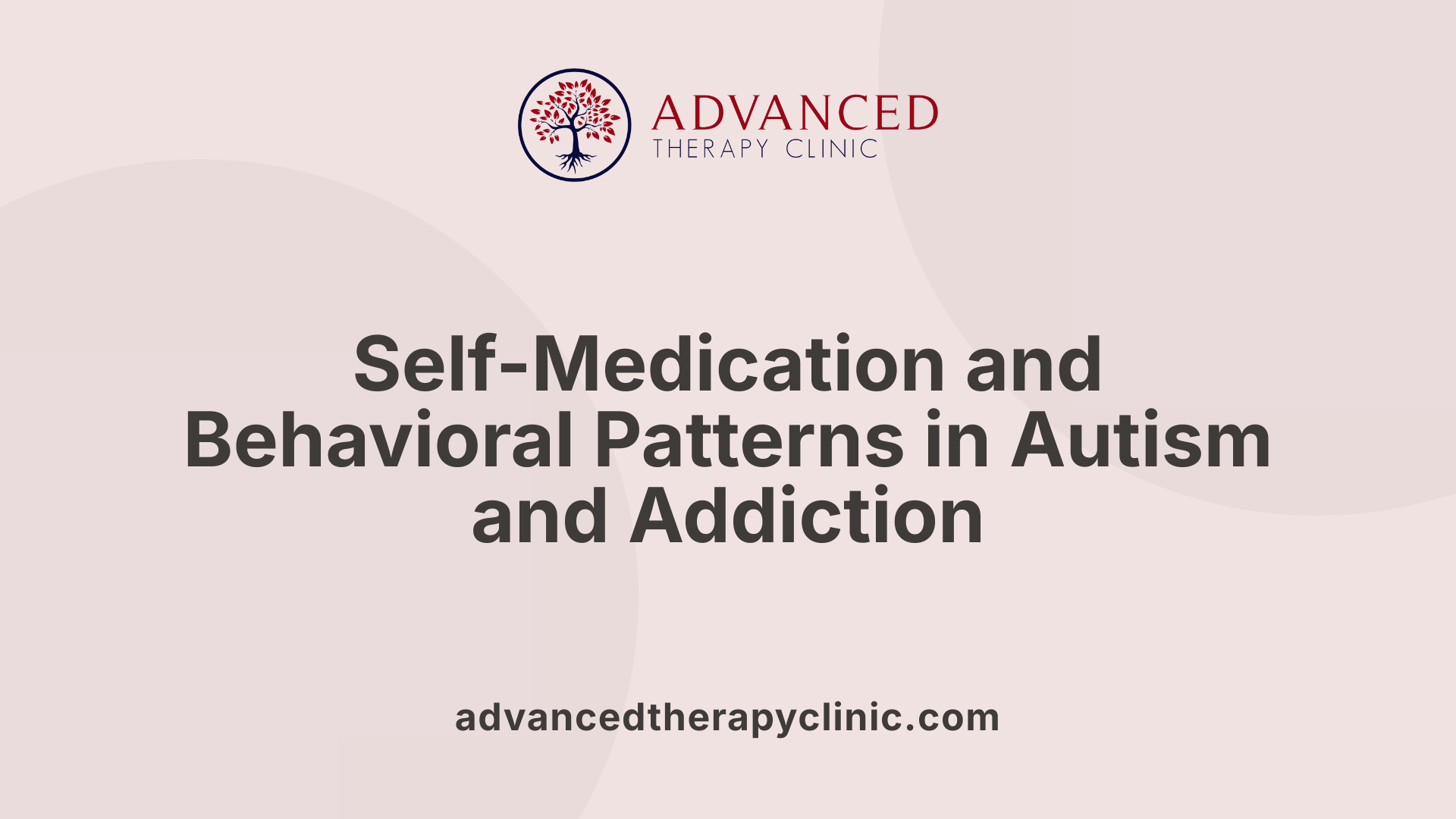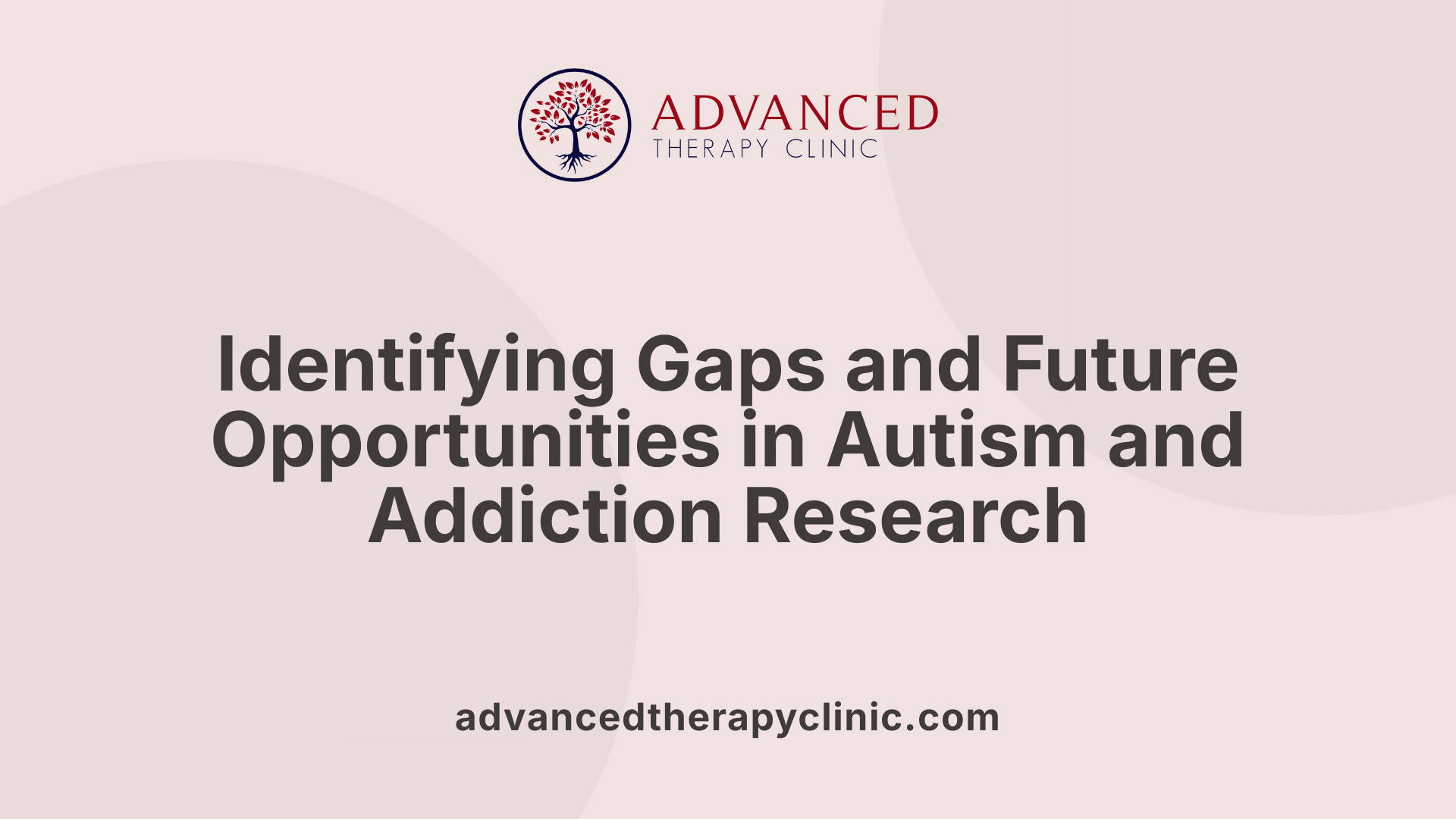Autism and Addiction's Close Connection


Understanding the Intersection of Autism and Addiction
Research increasingly recognizes a close connection between autism spectrum disorder (ASD) and addiction, involving behavioral and substance use disorders that share complex psychological, neurobiological, and social factors. Despite limited literature, evidence suggests that autistic individuals are more vulnerable to developing substance and behavioral dependencies, often as a way of coping with social anxiety, sensory overload, or emotional dysregulation. This article explores the symptoms, causes, manifestations, risk factors, treatment strategies, and implications of autism and addiction, highlighting the need for tailored, multidisciplinary approaches to support this underserved population.
Clinical Features and Manifestations of Autism and Addiction

What are the symptoms, causes, and manifestations of autism and addiction for educational purposes?
Autism spectrum disorder (ASD) presents a range of characteristics that influence communication, social interaction, and behavior. Common symptoms include difficulties in understanding social cues, repetitive behaviors, intense focus on specific interests, sensory sensitivities, and challenges with flexibility and change. These traits can significantly affect how autistic individuals interact with their environment and cope with everyday stressors.
Addiction, on the other hand, involves compulsive engagement in substances or activities despite negative outcomes. Typical signs include risky behaviors, loss of control over substance use or activities, withdrawal from social interactions, and continued pursuit of the activity despite health or social consequences. Addictive behaviors are often used as coping mechanisms to manage overwhelming emotions, sensory overload, or social anxiety.
The causes and risk factors for both autism and addiction are complex and intertwined. Autism’s neurological basis involves differences in brain development that impact information processing, emotional regulation, and sensory integration. These biological differences can predispose individuals to seek out behaviors or substances that mitigate discomfort or provide temporary relief.
In terms of causes of addiction within the autistic population, emotional regulation difficulties, trauma history, co-occurring mental health conditions like ADHD or anxiety, and social isolation play significant roles. Autistic individuals may turn to substances or addictive behaviors to self-medicate symptoms such as depression, anxiety, or sensory overload. Some use drugs or alcohol to improve social acceptance or mask autistic traits, especially when faced with societal stigma.
Signs of addiction in autistic populations include changes in behavior like increased irritability, social withdrawal, financial problems, unexplained injuries, and alterations in appearance or routine. Behavioral addictions such as excessive gaming, internet use, or shopping are common coping strategies for managing sensory overload and social anxiety.
It’s important to recognize that while some studies show lower overall substance use in autistic adults compared to non-autistic peers, others indicate higher levels of substance misuse when used for self-medication. For example, up to 36% of autistic individuals report alcohol or drug problems, often linked to attempts to manage mental health symptoms or sensory discomfort.
Understanding the manifestation of these conditions is vital for developing personalized treatment strategies. Integrated approaches involve applied behavioral analysis, cognitive-behavioral therapy, family involvement, and sensory-friendly environments. Tailored interventions aim to address both the core features of autism and the addictive behaviors, improving overall quality of life.
Notable signs that may suggest addiction in autistic individuals include:
- Behavioral changes such as irritability or withdrawal
- Unexplained injuries or physical changes
- Financial difficulties
- Changes in social circles or routines
- Increased self-isolation or obsession with specific activities
Addressing these intertwined conditions requires a comprehensive, autism-sensitive perspective that recognizes the unique challenges and resilience factors within this population.
Current Scientific Understanding of Autism and Addiction Link

What is the current scientific and medical understanding of the connection between autism and addiction?
Research indicates there is a noticeable relationship between autism spectrum disorder (ASD) and various addictive behaviors and substance use. Though the evidence is not yet definitive, it suggests that individuals with autism or exhibiting autistic traits are more prone to engaging in behaviors such as internet and gaming addiction, gambling, shopping, and even substance use like alcohol, marijuana, cocaine, and opioids.
A significant aspect of this connection involves underlying neurobiological factors. Differences in brain circuits that process reward, impulse control, and emotional regulation may make autistic individuals more susceptible to addiction. For example, some studies suggest that these neural variations can lead to difficulties in managing impulses or seeking sensory stimulation, which can drive repetitive or addictive behaviors.
Behavioral factors also play a crucial role. Many autistic people may turn to substances or addictive activities to cope with social anxiety, sensory overload, or emotional dysregulation. Self-medication is common, with substances used temporarily to manage distress or improve focus.
When examining research findings, some studies associate higher autistic traits with increased risks for stimulant and opioid use disorders, especially when comorbid conditions such as ADHD or mental health issues are present. Conversely, other research notes mixed results, with some autistic populations showing lower overall rates of substance use, which may depend on how addiction and autism are defined and measured.
Despite these insights, significant gaps remain. The causality between autism and addiction has not been firmly established. Many studies lack consistent methodologies or biopsychosocial controls, making comparisons difficult. The complex interplay of neurological, psychological, and environmental factors warrants further investigation.
Current priorities in research emphasize understanding specific triggers and risk factors for addiction in autistic populations. There is a need to explore how co-occurring conditions—like anxiety or sensory processing disorder—and neurobiological differences influence addictive behaviors. Additionally, identifying early indicators of vulnerability and developing targeted prevention and treatment strategies are critical areas for future study.
In summary, while existing data suggest a meaningful association between autism and addiction, the exact mechanisms and causal pathways remain incompletely understood. Enhanced, rigorous research will be essential to inform better clinical practices, personalized interventions, and policies aimed at addressing this complex connection.
Risk Factors and Early Indicators of Co-occurring Autism and Addiction

What are the risk factors and signs of co-occurring autism and addiction?
Individuals with autism spectrum disorder (ASD) are more vulnerable to developing substance use disorders (SUD), especially when they also experience other psychiatric conditions such as ADHD. This increased risk is influenced by both genetic and environmental factors.
Several elements contribute to this heightened vulnerability. Familial links, where relatives have histories of substance misuse or autism, suggest genetic inheritance plays a role. In addition, neurological differences inherent to autism may predispose individuals to addictive behaviors.
Environmental factors also significantly impact risk levels. Living in environments with peer pressure, social isolation, or limited access to appropriate healthcare resources can make autistic individuals more prone to turning to substances or addictive activities as coping mechanisms.
Autistic individuals often experience heightened internal stress and sensory sensitivities. Routines and self-medication are common strategies used to manage anxiety, overload, and social difficulties. These behaviors, while adaptive, can sometimes lead to dependence or compulsive patterns resembling addiction.
Recognizing early signs of co-occurring autism and addiction is vital for prompt intervention. Increased risky behaviors, such as frequent substance use or impulsive activities, may indicate emerging problems. Excessive intake or dependence on substances, especially as a means to mask autistic traits or alleviate discomfort, are warning signals.
Behaviorally, autistic individuals might also exhibit compulsive behaviors like excessive internet or gaming activities, which can develop into behavioral addictions. These are often attempts to manage sensory overload or social anxiety.
Signs also encompass emotional and behavioral changes, including irritability, withdrawal from social interactions, and difficulty controlling the urge to use substances. Dependence on substances as a form of self-medication for anxiety, depression, or sensory overwhelm can further complicate diagnosis and treatment.
Early detection involves careful observation of behavioral patterns and emotional responses. Healthcare providers need to tailor assessments to be sensitive to sensory sensitivities and communication styles common in autism.
Implementing intervention strategies that consider these factors can greatly improve outcomes. Approaches like specialized behavioral therapies, family involvement, and support groups are beneficial. Making modifications to therapy environments to accommodate sensory needs also enhances engagement and recovery chances.
Understanding the interconnected risk factors and signs allows caregivers and clinicians to better support autistic individuals in avoiding or managing co-occurring addiction. Continued research exploring shared neurobiological pathways and environmental influences remains essential for developing more effective prevention and treatment strategies.
Effective Treatment and Management Strategies

What treatment options and management strategies are effective for individuals with both autism and addiction?
Treating co-occurring autism and addiction requires approaches that are carefully tailored to the individual's unique needs. Since autism influences behavior, communication, sensory processing, and emotional regulation, therapies must adapt accordingly.
One of the most beneficial interventions is cognitive-behavioral therapy (CBT). This therapy has shown promising results in reducing alcohol consumption, cravings, and addressing mental health symptoms like anxiety and depression common in this population. CBT helps individuals develop coping strategies and modify thought patterns that contribute to substance use.
In addition to individual therapy, integrated treatment programs are highly effective. These programs combine addiction management with autism-specific supports such as visual aids, sensory-friendly environments, and social skills training. This holistic approach ensures that behavioral, emotional, and sensory challenges are addressed simultaneously.
Group therapies tailored for autistic individuals also contribute to better outcomes. These settings consider communication difficulties and sensory sensitivities, making them accessible. They foster social interaction, reduce feelings of isolation, and promote emotional regulation.
Other therapeutic modalities include dialectical behavior therapy (DBT), which helps manage intense emotions and impulsivity. Creative therapies like art therapy, mindfulness practices, and sound therapy can improve emotional expression, reduce stress, and enhance social functioning.
Specialized treatment plans often involve multidisciplinary teams, including psychologists, psychiatrists, speech and language therapists, occupational therapists, and social workers. These teams work collaboratively to adapt interventions, considering co-occurring mental health conditions and core autism traits.
For some, inpatient detoxification or residential programs might be necessary, especially if addiction is severe. Outpatient therapies and support groups offer ongoing assistance, helping prevent relapse and promote longer-term recovery.
How can clinicians tailor approaches for autistic individuals facing addiction?
Effective management hinges on understanding the individual's sensory preferences, communication style, routines, and emotional triggers. Clinicians should employ communication techniques suited to the individual's needs, such as visual schedules or social stories.
Moreover, incorporating family members or caregivers into treatment plans can improve outcomes. They can support behavior change, reinforce skills learned during therapy, and provide emotional support.
In summary, successful treatment necessitates a flexible, person-centered approach. Combining behavioral therapies, sensory adaptations, and social skills training within an integrated framework can lead to meaningful improvements, reduce substance use, and support overall well-being.
Role of Self-Medication and Behavioral Patterns

How do self-medication and behavioral patterns play a role in autism and addiction?
Self-medication behaviors are a significant aspect of how autism and addiction are interconnected. Many autistic individuals turn to substances or certain behaviors to manage the challenges they face daily. For example, they might use alcohol, drugs, or engaging in repetitive activities like gaming or shopping to alleviate feelings of anxiety, sensory overload, or emotional distress.
Autistic individuals often display repetitive and compulsive behaviors, including hyper-focus, rituals, and sensory-seeking activities. These behaviors can serve as coping mechanisms or forms of self-medication. For instance, a person might use marijuana or prescription medications to reduce sensory sensitivities or to calm their overactive mind.
Evidence shows that, although overall substance use may be lower among autistic populations compared to neurotypical groups, there is a heightened tendency to use specific substances to manage mental health symptoms. Autistic adults are nearly nine times more likely to report using recreational drugs such as cocaine, marijuana, or amphetamines to control issues like sensory overload and mental focus problems.
This self-medicating tendency can increase the risk of developing substance use disorders. When stress, trauma, or unmet healthcare needs are present, these behaviors may spiral into addiction or behavioral dependencies like gambling or internet overuse.
The neurological differences associated with autism, including difficulties with impulse control and emotional regulation, can make it more challenging to stop or regulate these behaviors once they become ingrained.
Addressing these patterns requires tailored treatment plans that focus on understanding the underlying motives for substance and behavioral use. Therapeutic approaches like cognitive-behavioral therapy and social skills training, combined with addressing sensory and emotional needs, can help reduce reliance on self-medication.
Preventive efforts must also aim to improve healthcare support systems, offering better management of both autism symptoms and co-occurring mental health issues, ultimately reducing the temptation or necessity to engage in addictive behaviors.
Implications for Policy, Clinical Practice, and Future Research

What are the clinical, policy, and research implications of the relationship between autism and addiction?
The intricate connection between autism and addiction carries profound consequences across multiple domains. Understanding this relationship highlights the importance of modifying and improving clinical, policy, and research frameworks to better serve autistic individuals.
Clinically, this link underscores the need for specialized treatment approaches. Traditional addiction treatments may not adequately address the unique needs of autistic people, who often face sensory sensitivities, communication challenges, and co-occurring mental health conditions such as anxiety or ADHD. Tailored therapies like applied behavioral analysis (ABA), cognitive-behavioral therapy (CBT), mindfulness practices, and sensory-friendly interventions are essential. These adaptations enhance engagement, improve outcomes, and reduce the risk of relapse. Clinicians must also pay close attention to early indicators of addiction and incorporate family or caregiver support systems.
From a policy perspective, raising awareness is crucial to combat stigma and misconceptions about autism and substance use. Training healthcare providers on autism-specific challenges can improve screening, diagnosis, and treatment. Policies should also support the development and funding of autism-informed addiction programs, ensuring accessibility and inclusivity. Environment modifications—such as sensory-friendly spaces and adjusted staffing training—are key to fostering supportive care environments.
Research plays a pivotal role in illuminating the complex pathways linking autism and addiction. There is an urgent need for studies that clarify risk factors, neurobiological mechanisms, and triggers unique to this group. For example, understanding how genetic predispositions, brain structure differences, and co-occurring conditions influence addiction vulnerability can inform targeted interventions. Additionally, evaluating the effectiveness of specialized treatment modalities and identifying early behavioral indicators of addiction are essential goals.
Addressing gaps in current knowledge will lead to the development of evidence-based, autism-responsive treatment protocols. Integrating research findings into clinical practices can improve success rates and reduce adverse outcomes for autistic individuals struggling with addiction.
Future directions for policy, clinical practice, and research
| Area | Current Focus | Needed Developments | Example Initiatives |
|---|---|---|---|
| Policy | Awareness campaigns, stigma reduction | Funding for specialized programs, inclusive screening policies | Training modules for providers, legislative support for autism-informed addiction services |
| Clinic | Tailored therapies, sensory accommodations | Development of autism-specific intervention protocols, early detection tools | Implementation of sensory-friendly rehab spaces, caregiver involvement strategies |
| Research | Understanding comorbid pathways | Longitudinal studies, neurobiological research, intervention trials | Genetic studies on shared vulnerability, behavioral research on triggers |
By aligning policies, clinical approaches, and research efforts, stakeholders can significantly improve the quality of life for autistic people affected by addiction. Recognizing the unique challenges and pathways of autism provides a foundation for more effective prevention, early intervention, and compassionate support systems.
Future Research Directions and Knowledge Gaps

What are the current gaps and future directions in research at the intersection of autism and addiction?
Research exploring the link between autism and addiction has uncovered important insights but also reveals notable gaps that need to be addressed to improve understanding, prevention, and treatment.
One major area requiring further investigation is the neurobiological mechanisms that underlie both autism spectrum disorder (ASD) and substance use disorders (SUD). While some evidence suggests neurochemical and brain structure differences may predispose autistic individuals to addictive behaviors, comprehensive and consistent findings are limited. Understanding shared neurobiological pathways could lead to more targeted therapies.
Another crucial aspect is identifying specific risk factors and triggers for addiction in autistic people. Factors such as co-occurring conditions like Attention Deficit Hyperactivity Disorder (ADHD), obsessive-compulsive disorder (OCD), or social anxiety, along with environmental influences like peer pressure and limited access to healthcare resources, contribute to the risk. Yet, research is still scarce on how these elements interact with individual neurobiological profiles.
Prevention and intervention strategies tailored to autistic individuals are also underdeveloped. Existing treatments tend to focus on general populations, with few evidence-based approaches adapted specifically for autistic traits or sensory sensitivities. Consequently, there is an urgent need for development and testing of personalized interventions that consider the unique cognitive, emotional, and sensory needs of autistic people.
Integrated care models that combine mental health, addiction treatment, and autism-specific supports remain largely theoretical or in early stages. Currently, many autistic individuals face fragmented healthcare systems that do not address co-occurring conditions holistically. Creating multidisciplinary, accessible, and flexible treatment programs could improve outcomes and reduce relapse rates.
Future research must adopt a comprehensive, multidisciplinary approach, integrating neurobiological, psychological, and social perspectives. This includes developing better screening tools that incorporate autistic traits to identify at-risk individuals early, and designing interventions that are both effective and acceptable for this population.
Addressing these research gaps requires collaboration among neuroscientists, clinicians, policymakers, and autistic individuals themselves. By deepening understanding of shared mechanisms and barriers, future efforts can better tailor prevention and treatment strategies, ultimately reducing the burden of addiction among autistic people.
Towards Better Support and Better Outcomes
Understanding the complex and multifaceted link between autism and addiction is crucial for developing effective, tailored care. As evidence grows, the importance of early identification, personalized intervention, and integrated support systems becomes clearer. Efforts in policy, research, and clinical practice that address the unique needs of autistic individuals—considering neurobiological, behavioral, and social factors—can significantly improve health outcomes and quality of life. Future research must prioritize elucidating underlying mechanisms and refining intervention strategies, ensuring that this vulnerable population receives compassionate, evidence-based support to navigate the challenges of both autism and addiction.
References
- Identifying the most important research, policy and practice ...
- Autism And Addiction: Signs, Risk Factors, and Treatment
- Autism and Addiction: Is There a Link?
- Autistic individuals may be more likely to use recreational ...
- Autism and addiction | Mental Health | UKAT
- Autism and Addiction | Symptoms & Treatment
- Addiction
Recent articles

The Benefits of ABA Therapy for Sibling Relationships and Family Bonds
Strengthening Family Ties Through Applied Behavior Analysis

How Speech Therapy Assists with Improving Verbal and Nonverbal Communication
Unlocking Communication Potential: The Role of Speech Therapy

Supporting Autism During Transitions
Strategies and Therapies to Navigate Transitions for Children with Autism

Low-Functioning Autism
Understanding Support and Therapies for Autism Spectrum Disorder Level 3

How Speech Devices Enhance Communication for Nonverbal Children
Transforming Communication: The Role of Speech Devices for Nonverbal Children

TEACCH Method For Autism
Comprehensive Therapeutic Approaches for Autism Spectrum Disorder


